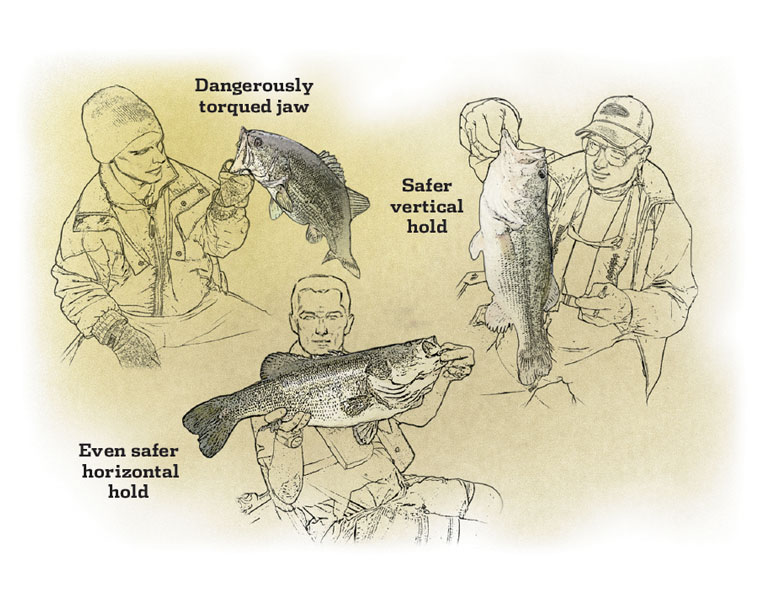
Many years ago, former hatchery superintendent and Texas Parks & Wildlife Department employee David Campbell reported that several of the 13-pound-plus largemouth bass submitted to the state’s ShareLunker program had broken jaws, apparently due to anglers improperly holding them. This news was reported in many outlets including this column in In-Fisherman.
Department employees have found similar damage to several ShareLunker fish, and the news has been widely disseminated. Some press releases have distorted the message, suggesting that holding a heavy bass by its jaw may break the jaw and implying that lip-landing big bass is detrimental.
But heavy bass can be safely lifted vertically by the jaw in a conventional lipping manner. What breaks bones and tears ligaments is torquing a fish from a vertical to more horizontal position to show it off or for a photo. A bass’s jaw is not designed to be used as a lever. Torquing can take place whenever an angler uses the jaw to move a hanging bass from a vertical position.
When a bass is partially submerged in water, as during normal lip-landing, the weight of the fish is reduced. Bass held in water are unlikely to suffer damage.
But images of pro anglers and TV hosts often show improper handling. To avoid damage to the jaw, bass must be held vertically in a head-up, tail-down position, not with the angler’s fingers pushing upward under the jaw. If an angler wants a picture of a fish held horizontally, the tail weight must be totally supported with the other hand to avoid stressing the jaw structure. That’s because a bass’ mouth does not open like a human being’s. Instead, to fully open its mouth, a bass expands the tissues under its lower jaw and thrusts its upper lip up and forward. The lower jaw bone remains pointed forward, not down and away from the fish’s nose.
Anglers should continue to lip-land bass, but it’s best to leave them in the water or raise them vertically when out of water until both hands can support their weight. Photos of bass being waved in the air with water spraying are images of bass abuse. If the fish are heavy enough, treating bass this way can cause inadvertent damage through mishandling.






![Air gun 101: The differences between .177 & .22 – Which jobs they do best ? [Infographic]](https://airgunmaniac.com/wp-content/uploads/2020/09/g44-218x150.jpg)



































